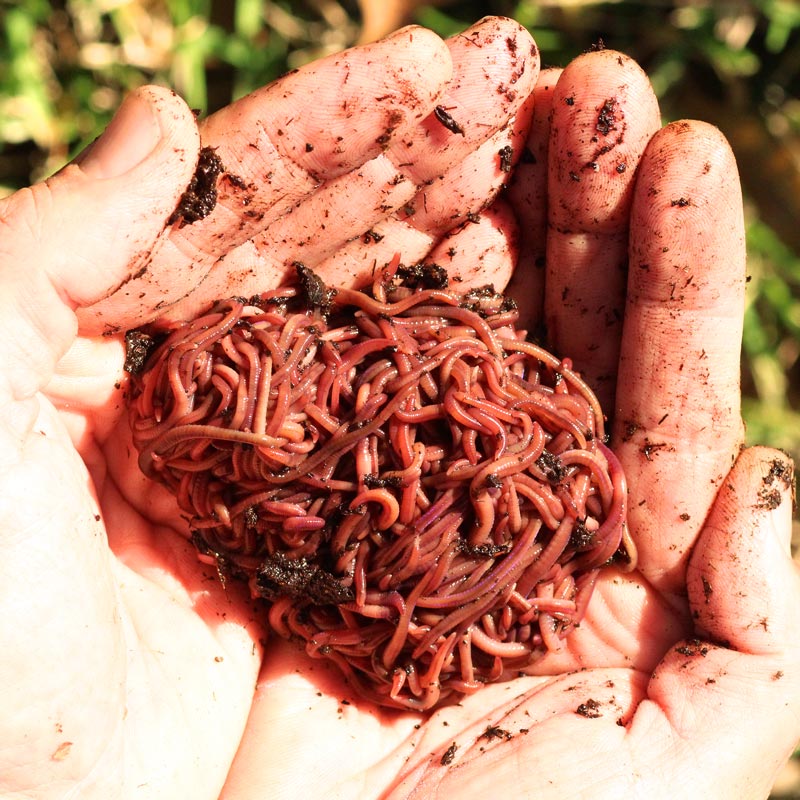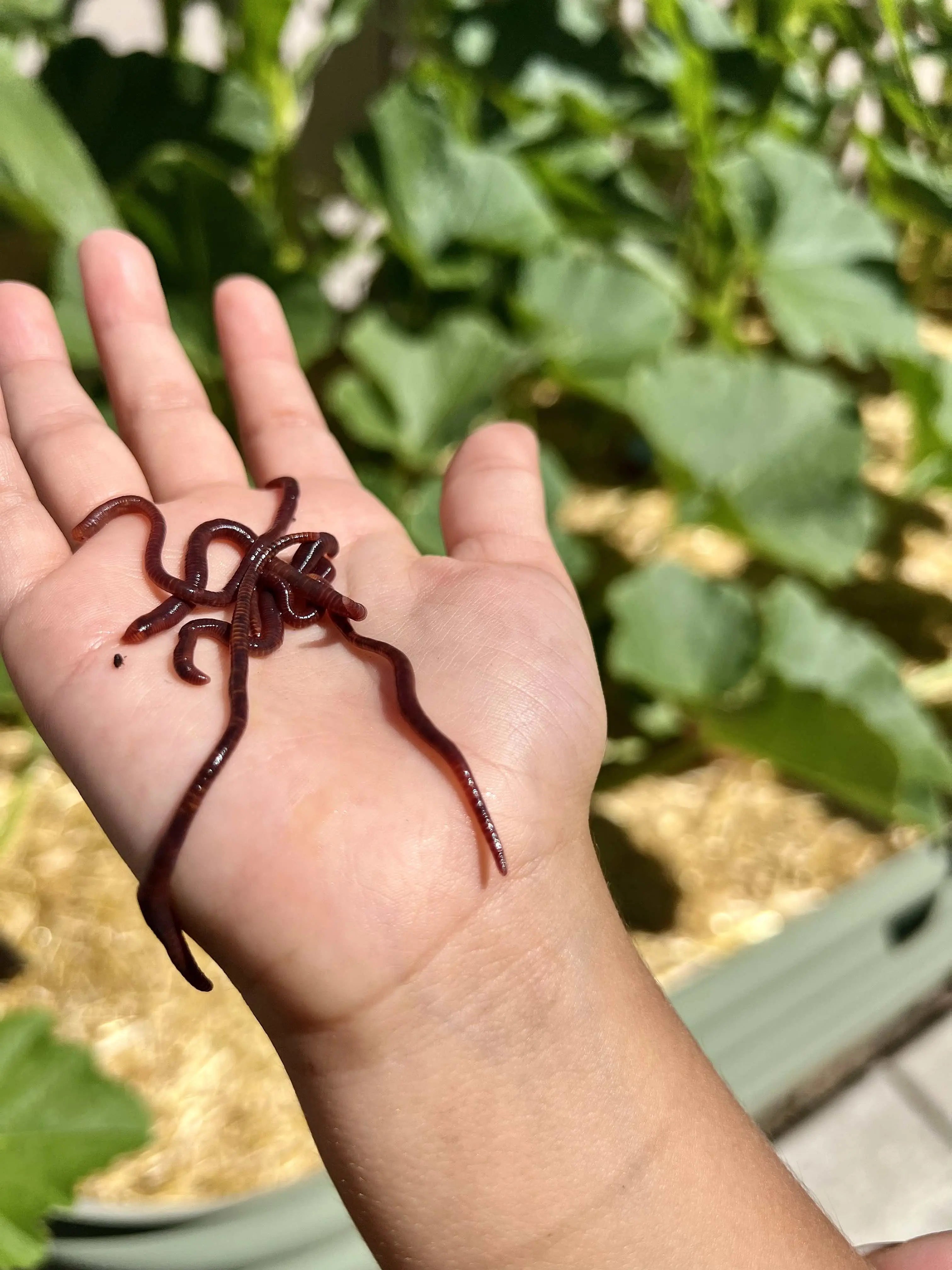Red Wiggler Worms - Reliable Decomposers for Your Compost Container
Red Wiggler Worms - Reliable Decomposers for Your Compost Container
Blog Article
Optimizing the Benefits of Red Wiggler Worms: A Comprehensive Guidebook for Home Gardeners and Urban Farmers
In the world of lasting horticulture methods, red wiggler worms stand as unrecognized heroes, quietly transforming natural waste into nutrient-rich castings that can function marvels for soil wellness. As home gardeners and metropolitan farmers progressively seek economical and environmentally friendly ways to enhance their gardens, the possible advantages of harnessing the power of red wigglers can not be overstated. From lessening kitchen area waste to cultivating healthier plants, the utilization of these modest animals provides a plethora of advantages. By discovering the intricacies of exactly how to effectively take care of and optimize the advantages of red wiggler worms, people can unlock a wealth of chances for boosting the sustainability and performance of their gardening undertakings.
Recognizing Red Wiggler Worms
Red Wiggler worms, renowned for their reliable composting abilities, are a varieties of earthworms extensively used in vermiculture methods. These worms, medically called Eisenia fetida, prosper in rotting organic material, making them suitable candidates for composting (Red Wiggler Worms). Red Wigglers are ravenous eaters, with the ability of consuming their very own weight in organic waste daily. Their digestion process breaks down raw material into nutrient-rich castings, which are a beneficial resource for improving dirt and promoting plant development.
One secret quality of Red Wiggler worms is their reproductive price. These hermaphroditic creatures possess both male and female reproductive organs, allowing them to recreate rapidly under beneficial conditions. A fully grown Red Wiggler can create multiple offspring in a short duration, ensuring a steady populace within a composting system.

Setting Up a Worm Container
When developing a worm bin for vermiculture purposes, correct preparation and attention to information are important for developing a helpful setting for Red Wiggler worms. Begin by choosing an appropriate container for your worm bin. This can be a plastic or wooden container with a lid to preserve moisture levels and protect the worms from light. Guarantee that the container has water drainage holes near the bottom to stop waterlogging.

Location the worm container in an awesome, dark location away from direct sunlight and extreme temperatures. By following these steps, you can set up a thriving worm bin that will successfully process natural waste right into nutrient-rich vermicompost for your garden.
Feeding and Keeping Worms
Making certain a nourishing and well balanced diet regimen is essential for the wellness and performance of Red Wiggler worms in a vermiculture system. It is crucial to prevent feeding them citrus fruits, onions, garlic, dairy items, meat, and oily foods as these can be hazardous to the worms or trigger unpleasant smells in the container.
Proper dampness levels are additionally vital for the well-being of important site Red Wiggler worms. The bed linens needs to seem like a wet sponge, supplying enough dampness for the worms to breathe through their skin. On a regular basis inspect the dampness degrees and change by including water or dry bed linens product as needed. Furthermore, keeping proper temperature problems in between 55-77 ° F(13-25 ° C )will certainly guarantee optimum worm activity and reproduction. By carefully checking their diet regimen, dampness, and environmental conditions, home gardeners and urban farmers can sustain a productive and healthy Red Wiggler worm populace for composting functions.
Collecting Worm Castings
To successfully draw out nutrient-rich worm spreadings from the vermicompost, a methodical harvesting procedure is necessary for optimizing the composting benefits. Red Wiggler Worms. The initial action in collecting worm spreadings is to encourage the worms to move to one side of the container. This can be attained by positioning fresh food scraps on one side and leaving the various other side uninterrupted for a few days. As soon as most of worms have dodged with fresh food, the spreadings can be accumulated from the opposite side.
After the spreadings have actually been collected, it is necessary to divide any type of staying worms from the spreadings to prevent damaging them throughout storage or application. One efficient approach is to produce cone-shaped heaps of castings under intense light. Worms will intuitively move away from the light, allowing for easy separation and removal.
Last but not least, the harvested worm spreadings should be saved in a trendy, dark, and completely dry place to keep their top quality and efficiency as a nutrient-rich dirt modification. By complying go to this web-site with these actions, home garden enthusiasts and urban farmers can make the most of the benefits of red wiggler worms in their vermicomposting systems.
Making Use Of Worm Castings in Gardening
The unification of nutrient-rich worm spreadings right into garden dirt can considerably enhance plant development and overall soil health and wellness. Worm castings, additionally understood as vermicast, are an all-natural fertilizer produced by red wiggler worms as they break down natural issue. These castings are abundant in crucial nutrients like nitrogen, phosphorus, potassium, and beneficial germs that advertise plant development and improve soil framework.
When utilizing worm spreadings in horticulture, it is necessary to mix them completely into the dirt or use them as a top clothing around plants. The slow-release nature of worm spreadings makes sure a consistent supply of nutrients to plants gradually, reducing the danger of nutrient leaching and promoting long-lasting dirt fertility. Furthermore, worm castings assist improve dirt oygenation, water retention, and microbial task, producing a healthy and balanced setting for plant roots to thrive.

Final Thought
Finally, the application of red wiggler worms in home horticulture and metropolitan farming can substantially benefit dirt wellness and plant development. By understanding how to establish and preserve a worm container, feed the worms correctly, and harvest their nutrient-rich castings, garden enthusiasts can optimize the benefits of these earthworms. Including worm spreadings right into gardening practices can enhance soil fertility and overall plant performance. In general, red wiggler worms provide a lasting and reliable solution for boosting garden and farm returns.
In the world of lasting gardening practices, red wiggler worms stand as unsung heroes, silently changing organic waste right into nutrient-rich castings that can work wonders for dirt wellness.When developing a worm container for vermiculture objectives, proper preparation and attention to detail are crucial for creating a conducive environment for Red Wiggler worms. read this The first step in harvesting worm castings is to encourage the worms to move to one side of the bin. Worm spreadings, additionally understood as vermicast, are a natural plant food generated by red wiggler worms as they break down natural issue. By comprehending exactly how to establish up and keep a worm bin, feed the worms properly, and gather their nutrient-rich spreadings, gardeners can make best use of the benefits of these earthworms.
Report this page